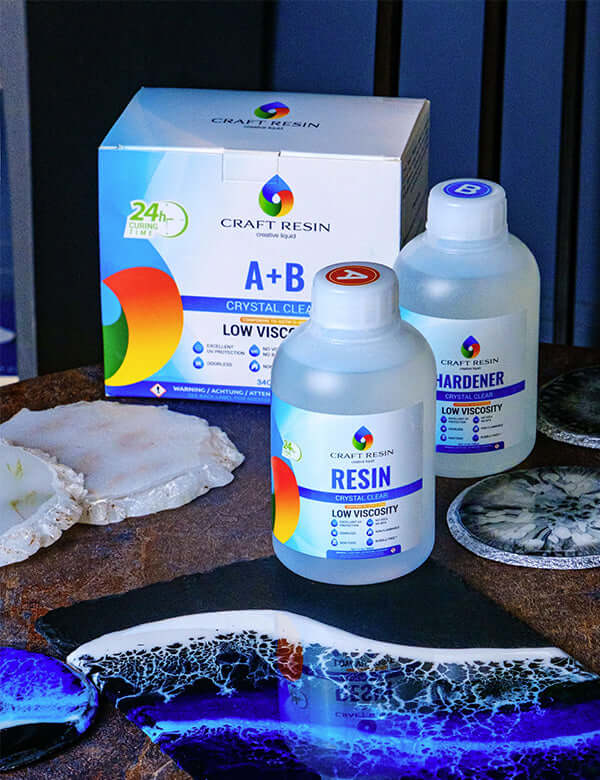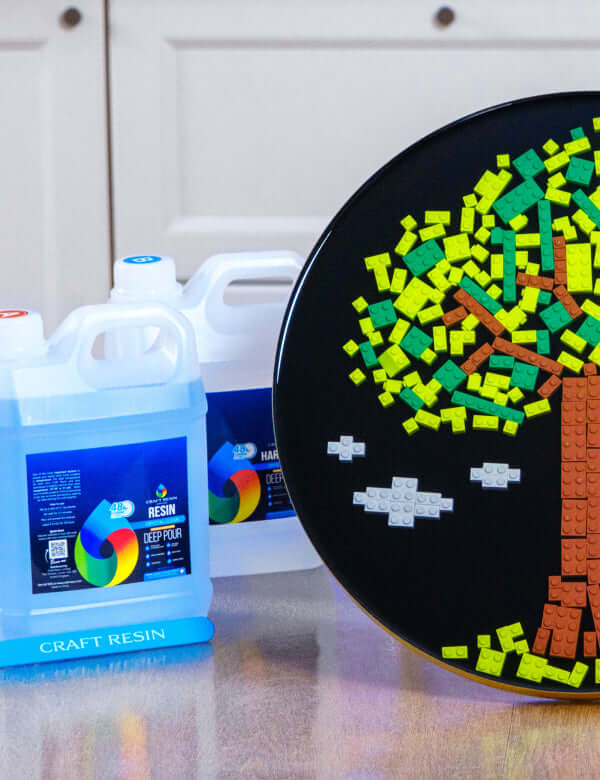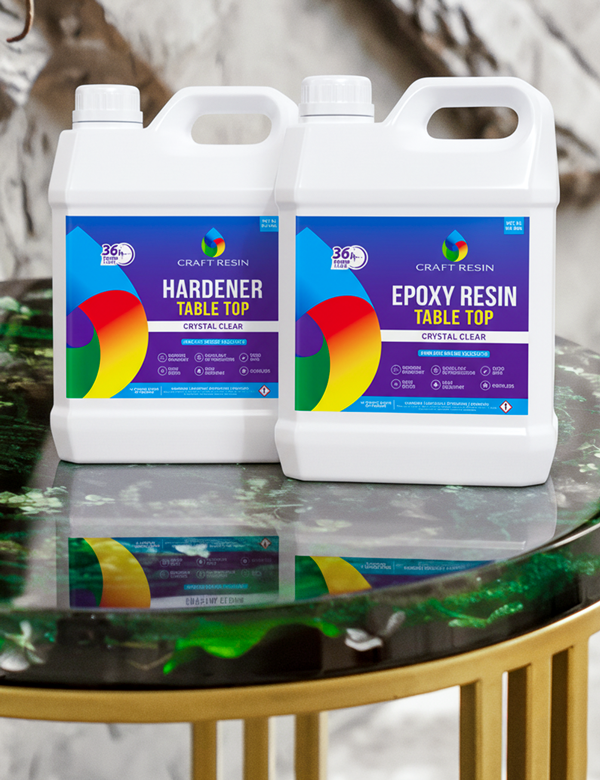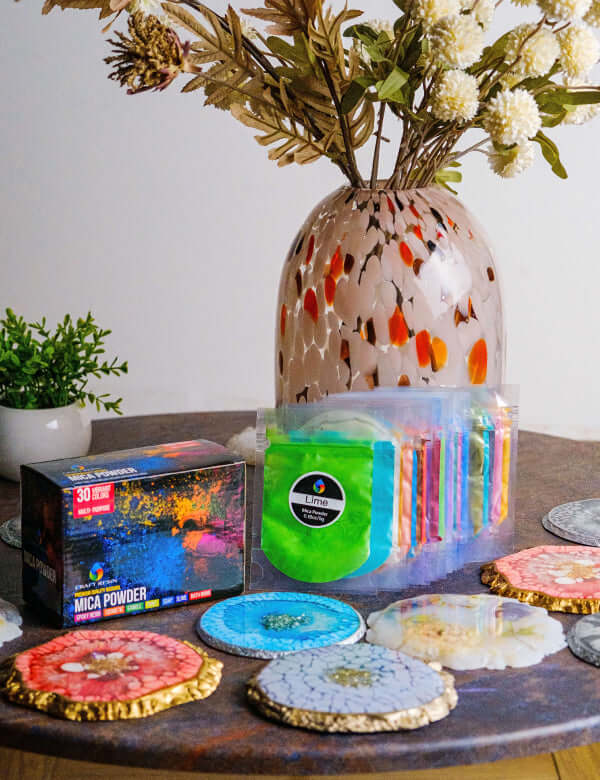Frozen in Resin: Crafting Three-Dimensional Wonders
Introduction
Ever wanted to freeze a moment in time? Welcome to the world of 3D resin art! This unique art form allows you to create stunning dioramas and encapsulations, capturing scenes and objects in crystal-clear resin. Let's dive into the techniques, trends, and inspirations driving this exciting medium. Whether you're a seasoned artist or just starting out, understanding the intricacies of 3D resin art can elevate your creative practice and open up a world of possibilities.

The Art of 3D Resin Creations
What is 3D Resin Art?
3D resin art involves creating layered, three-dimensional scenes and encapsulating objects within clear resin. This technique has evolved from simple crafts to complex, highly detailed artworks. Artists use epoxy resin to create lifelike dioramas and stunning encapsulations that seem to freeze time itself. By layering resin and embedding objects at various stages, artists achieve remarkable depth and realism, making each piece a miniature world that tells its own story.
The journey of 3D resin art begins with a clear vision and a meticulous planning process. Artists often start with sketches or digital mockups to conceptualize the final piece. This stage is crucial as it helps in visualizing the arrangement of different elements and planning the sequence of layers.
Key Techniques
Layering
Pour resin in layers to create depth. This method not only enhances the visual appeal but also allows for the creation of complex, multi-dimensional scenes. Each layer must be carefully planned and poured to avoid disturbances in the previous layers. The thickness of each layer and the time between pours are critical factors that influence the final outcome. By adding colorants or pigments to specific layers, artists can create depth and perspective, enhancing the three-dimensional effect.
Embedding
Place objects between layers to secure them in place. Whether you’re embedding natural elements like flowers or man-made objects like miniatures, precise placement is key. This technique ensures that each item is securely held within the resin and positioned exactly where you want it. Artists often use tweezers or other fine tools to place these objects, ensuring they stay in place as the resin cures. Some advanced techniques include embedding electronic components or light sources to add an interactive element to the artwork.
Curing
Allow each layer to cure properly before adding the next. Proper curing is crucial to avoid mixing layers and achieving a clear, bubble-free finish. Depending on the type of resin used, this process can take anywhere from a few hours to several days. Temperature and humidity control are essential during the curing process to prevent defects. Using a dust cover or curing in a dust-free environment can help maintain the clarity and quality of the resin.
Current Trends in 3D Resin Art
Trends Shaping the Future of Resin Art

Eco-friendly Materials
Artists are turning to sustainable, non-toxic resins. As the environmental impact of art materials becomes more prominent, the demand for eco-friendly resin options is growing. These resins are made from bio-based sources and are safer for both the artist and the environment. Some innovative products are even developed from recycled materials, contributing to the circular economy. Artists are also exploring ways to incorporate sustainable practices into their work, such as using natural dyes and pigments or upcycling materials into their resin art.

Technological Integration
LED lights and digital elements are being incorporated into resin pieces. This trend is pushing the boundaries of what resin art can be, adding dynamic lighting effects and interactive components that make pieces come to life. Artists are experimenting with microcontrollers and sensors to create resin artworks that respond to environmental changes or viewer interactions. This fusion of technology and art not only enhances the visual experience but also opens up new avenues for creativity and innovation.

Hyperrealism
There's a growing focus on ultra-realistic scenes. Artists are honing their skills to create resin pieces that are almost indistinguishable from real life, using techniques that mimic the fine details of natural textures and forms. This trend involves meticulous attention to detail and an in-depth understanding of the subjects being depicted. Hyperrealistic resin art often requires advanced techniques such as airbrushing, sculpting, and detailed painting to achieve the desired effect. The result is artwork that captivates viewers with its lifelike quality and intricate details.

Customization and Personalization
Bespoke resin pieces are in high demand. Personalized art that incorporates meaningful objects or custom designs is becoming increasingly popular, allowing customers to own unique, one-of-a-kind pieces. This trend is particularly evident in the creation of memorial keepsakes, wedding souvenirs, and personalized gifts. Artists collaborate closely with clients to understand their vision and incorporate personal elements into the artwork. The customization process can involve embedding personal mementos, such as photographs, heirlooms, or even handwritten notes, within the resin.
Interactive Art
Some resin artworks now feature movement or user interaction. This trend includes pieces that can be manipulated or moved, adding an engaging element to the viewing experience. Interactive resin art often incorporates mechanical elements, magnetic fields, or kinetic components that invite viewers to engage with the piece. This not only enhances the aesthetic appeal but also creates a memorable and immersive experience for the audience. Artists are continually exploring new ways to integrate interactivity, making resin art a dynamic and evolving medium.
Tips from the Pros
Pro Tips for Perfect Resin Art
Avoid Bubbles
Use a heat gun to eliminate air bubbles after each pour. Bubbles are a common issue in resin art, and a heat gun helps to bring them to the surface and pop them, ensuring a smooth, clear finish. For large or complex projects, consider using a vacuum chamber to degas the resin before pouring. This step can significantly reduce the number of bubbles and improve the overall clarity of the resin.
Prevent Yellowing
Choose high-quality, UV-resistant resin. Over time, exposure to sunlight can cause some resins to yellow. UV-resistant resins help maintain the clarity and color of your pieces. Additionally, storing resin artworks away from direct sunlight and applying UV-protective coatings can further extend their lifespan. For outdoor installations, using resins specifically designed for high UV exposure is essential.
Experiment with Colors
Mix pigments to achieve unique shades and effects. Don’t be afraid to try different color combinations and techniques like marbling or layering different colors to create depth and interest. Using mica powders, alcohol inks, and transparent dyes can add dimension and vibrancy to your resin art. Experimenting with color transitions and gradients can also enhance the three-dimensional effect and make your artwork stand out.
Layer Carefully
Allow each layer to cure fully before adding the next to avoid warping and imperfections. Rushing the curing process can lead to defects and a less professional finish. Use a level surface to ensure each layer is even and consistent. Keeping track of the curing times and environmental conditions can help you plan your layers more effectively. Consider using a curing calculator or schedule to manage complex projects with multiple layers.
Conclusion
Exploring the creative processes behind 3D resin art reveals the depth and diversity of this medium. By understanding and experimenting with these techniques, you can unlock new levels of creativity in your resin art projects. The future of resin art is bright, with new trends and innovations continually emerging. As artists push the boundaries of what’s possible, resin art will continue to captivate and inspire audiences around the world.
Ready to start your own journey? Visit Craft Resin for high-quality materials and join our community of artists pushing the boundaries of creativity. Our products are designed to help you achieve professional results, whether you're a beginner or an experienced artist. With Craft Resin, you can trust that your creations will have the clarity, durability, and beauty that you envision.
Additional Resources
For more detailed tutorials and video guides, check out our Craft Resin website. Join our online community to share your work, get tips, and find inspiration from fellow resin artists. Our website offers a wealth of resources, including step-by-step guides, troubleshooting tips, and inspiration galleries to help you on your creative journey.
Dive into the world of resin art and discover the endless possibilities that await. With patience, creativity, and quality materials like Craft Resin, you can create stunning pieces that captivate and inspire. Embrace the art of freezing moments in time and let your imagination soar. Whether you're preserving a cherished memory or creating a fantastical scene, resin art offers a unique and fulfilling creative outlet.







